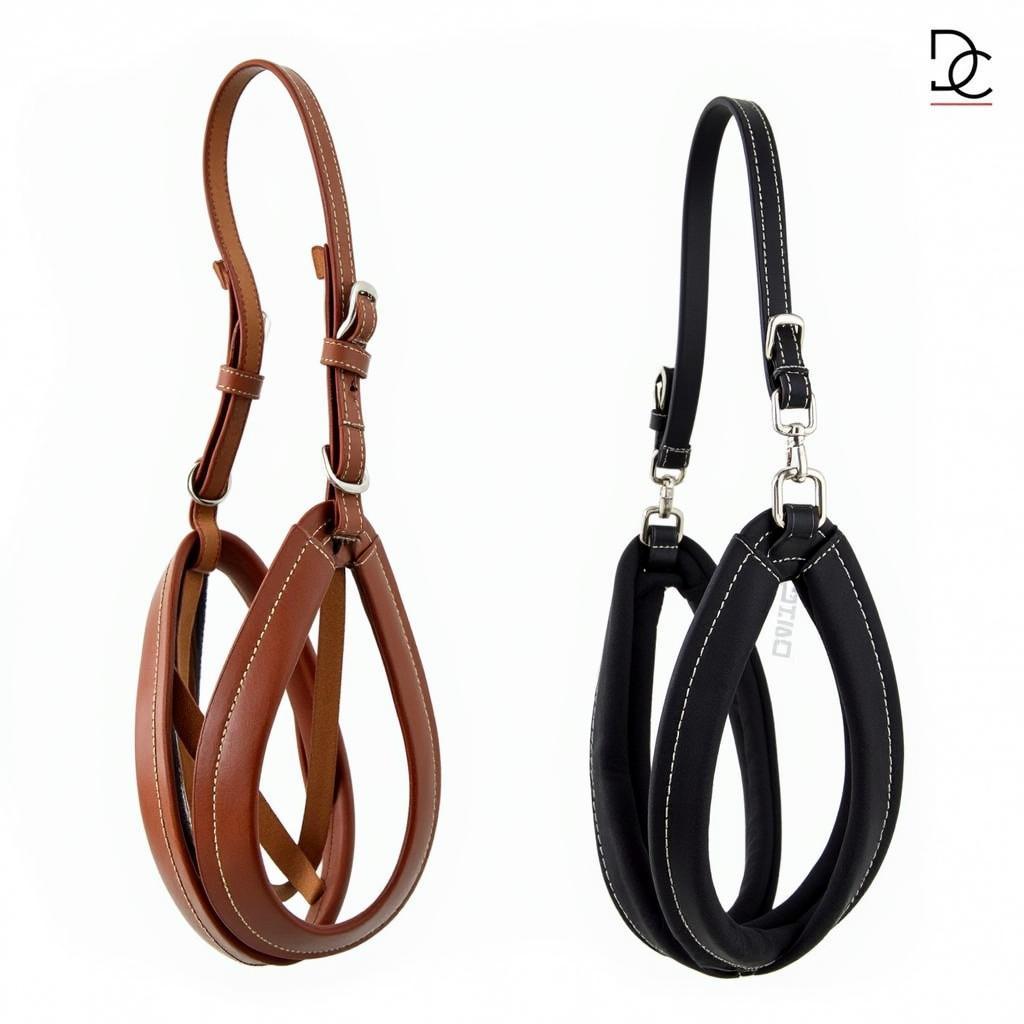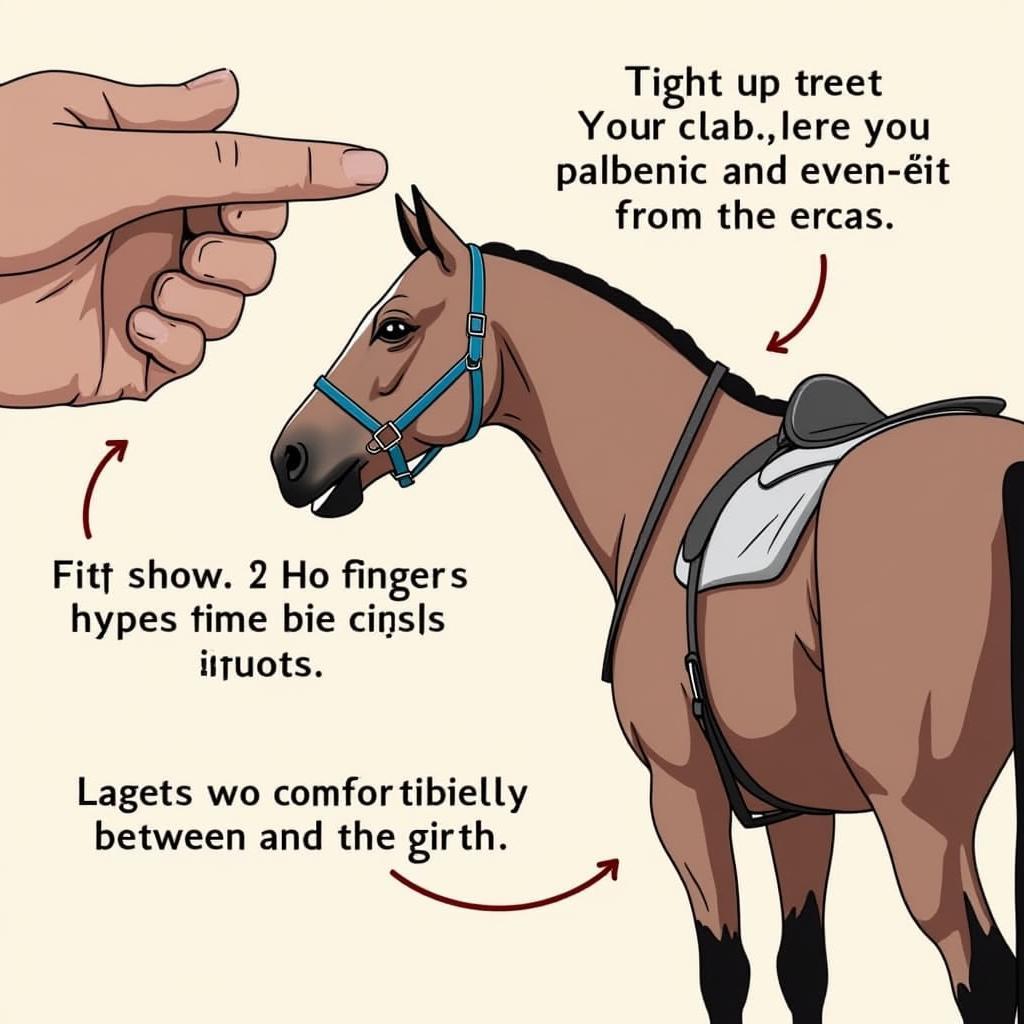A horse girth is a crucial piece of tack, connecting the saddle to the horse’s belly and keeping it securely in place. Choosing the right girth is essential for your horse’s comfort and performance. This guide covers everything you need to know about horse girths, from different types and materials to proper fitting and care.
Types of Horse Girths
There’s a wide variety of horse girths available, each designed for different disciplines and horse conformations. Understanding these differences can help you make the best choice for your equine partner. Some common types include:
- Dressage Girths: These girths are often anatomically shaped to allow for greater freedom of movement in the shoulder area.
- Jumping Girths: Designed with a forward cut to prevent interference with the horse’s elbows during jumping.
- Long Girths: Used with traditional saddles like those used in English riding disciplines.
- Short Girths: Commonly used with western saddles.
- String Girths: Made from interwoven strands of mohair or other materials, offering good breathability.
Understanding the nuances of each type will ensure optimal comfort and performance for your horse. For instance, a horse girth size chart can be invaluable in finding the perfect fit.
Choosing the correct girth type can significantly impact your horse’s comfort and performance. What’s right for a dressage horse may not be suitable for a jumper.
 Dressage Girth on Horse
Dressage Girth on Horse
Materials and Construction
Horse girths are made from various materials, each with its pros and cons. Leather is a popular choice for its durability and classic look, while synthetic materials like neoprene offer easy care and water resistance. Other options include sheepskin, which is soft and comfortable, and string girths, which are breathable and lightweight. Consider your horse’s individual needs and sensitivities when selecting a material. Some horses might be allergic to certain materials, so careful selection is crucial. A properly fitted girth on horse should distribute pressure evenly and avoid pinching or chafing.
Proper care and maintenance of your chosen girth will ensure its longevity. Leather girths require regular cleaning and conditioning, while synthetic materials can typically be washed with soap and water.
 Leather vs Neoprene Girth
Leather vs Neoprene Girth
How to Fit a Horse Girth Correctly
Properly fitting a horse girth is crucial for the horse’s comfort and well-being. A poorly fitting girth can cause pinching, rubbing, and even restrict breathing. When fitting a girth, ensure it’s snug but not too tight, allowing two fingers to fit between the girth and the horse’s side. For more specific sizing guidance, check out our dedicated horse girth page. It’s always better to err on the side of slightly too loose than too tight.
What if your horse is particularly sensitive? A vagus nerve horse girth might be a good option to explore. These are designed to avoid pressure on sensitive nerve pathways.
Remember, a properly fitted girth is essential for your horse’s comfort and performance.
What are the signs of a poorly fitted girth?
Signs of a poorly fitted girth include excessive sweating under the girth area, reluctance to move forward, and signs of discomfort such as pinning ears or biting at the girth.
How often should I check the fit of my horse’s girth?
You should check the fit of your horse’s girth before every ride. Adjustments may be needed depending on the horse’s condition and the type of activity planned.
 Correctly Fitted Horse Girth
Correctly Fitted Horse Girth
Girths for Miniature Horses
Miniature horses require specialized tack, including girths designed to fit their smaller frames. A mini horse girth is crucial for ensuring a proper fit and preventing discomfort.
Conclusion
Choosing the correct horse girth is a critical decision that impacts your horse’s comfort and performance. By understanding the different types, materials, and fitting techniques, you can ensure a safe and enjoyable riding experience for both you and your equine partner. Remember to always prioritize your horse’s well-being and seek professional advice if you have any concerns.
FAQ
- How do I clean a leather girth?
- What are the benefits of a neoprene girth?
- How often should I replace my horse’s girth?
- What should I do if my horse has a girth gall?
- Can I use a western girth on an English saddle?
- What are the signs of a too-tight girth?
- How do I measure my horse for a girth?
Common Girth Questions
- My horse keeps getting girth galls. What should I do? This could indicate a poorly fitted girth, incorrect girthing technique, or an underlying skin condition. Consult with a veterinarian or experienced saddle fitter.
- What type of girth is best for trail riding? A durable and comfortable girth made from leather or a synthetic material like neoprene is often a good choice for trail riding.
- How do I know if my girth is the correct length? Measure your horse’s girth area and consult a size chart to determine the appropriate length.
Further Reading and Resources
For more information on horse tack and care, visit our other helpful articles on Justus Horses USA. You might find our articles on saddle fitting and bridle selection particularly helpful.
Contact Us
For further assistance, please contact us at Phone: 0772127271, Email: [email protected] or visit our address: QGM2+WX2, Vị Trung, Vị Thuỷ, Hậu Giang, Việt Nam. We have a 24/7 customer service team.